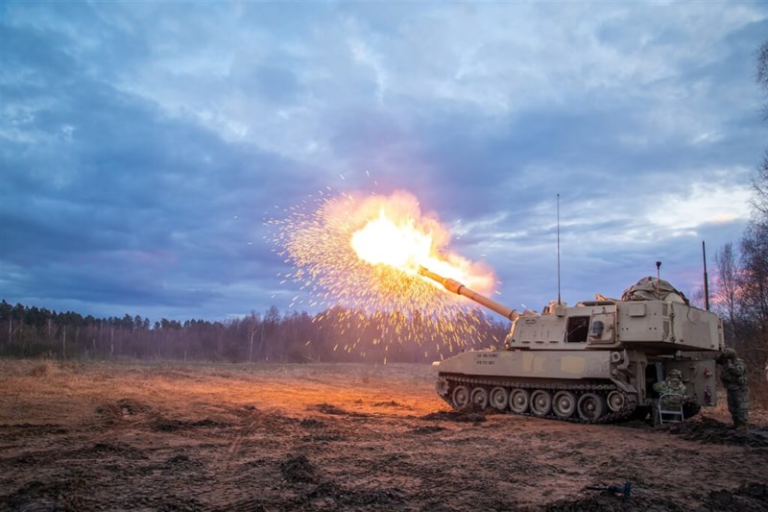
U.S. Army Soldiers of the 25th Infantry Division participated in port operations by moving equipment and aircraft, such as AH-46 Apache and CH-47 Chinook helicopters, in support of Salaknib 25 at Subic Bay, Philippines.
U.S. Army soldiers recently concluded a comprehensive port operations exercise at the Port of [Insert Port City, State], demonstrating their ability to efficiently load, unload, and manage critical equipment and supplies, enhancing the Army’s overall readiness. The exercise, which ran from [Start Date] to [End Date], saw personnel from [Specific Unit Designation, e.g., the 832nd Transportation Battalion] hone their skills in a realistic, dynamic environment.
The operation focused on the coordinated movement of vehicles, containers, and other essential materials crucial for deployment and operational success. Soldiers utilized a variety of specialized equipment, including forklifts, cranes, and heavy-duty trucks, to rapidly process cargo entering and exiting the port.
“This exercise is vital for ensuring our soldiers are proficient in the complex tasks required to operate a port effectively,” said [Quote from Unit Commander – Include Name, Rank and Title, e.g., Major Sarah Johnson, Commander, 832nd Transportation Battalion]. “The ability to rapidly deploy and sustain our forces is a cornerstone of our national defense, and this port operations training ensures we are ready to respond to any contingency.”
The exercise incorporated realistic scenarios, including simulated equipment malfunctions, unexpected cargo shipments, and communication disruptions, forcing soldiers to adapt and overcome challenges. This hands-on experience provided invaluable training in problem-solving, teamwork, and adherence to safety protocols.
Beyond the practical skills gained, the operation fostered critical interagency collaboration. Soldiers worked closely with civilian port authorities, customs officials, and other government agencies, building relationships that will prove essential in future real-world deployments.
“The partnership we have with the Port of [Insert Port City, State] is invaluable,” stated [Quote from Another Authority Figure on the Exercise, e.g., Sergeant First Class David Miller, Operations Sergeant]. “Their expertise and cooperation were crucial to the success of this exercise, and we appreciate the opportunity to train alongside them.”
The conclusion of this port operations exercise marks a significant step in strengthening the U.S. Army’s ability to project power globally. By investing in realistic training and fostering strong partnerships, the Army ensures its soldiers are prepared to meet any challenge, anywhere in the world. The experience gained will contribute to more efficient deployments, improved logistics, and ultimately, a more ready and responsive fighting force.
“Learning how the Philippine military conducts operations has opened my eyes to how things can be run differently, as well as how we work together as allies and partners.” said U.S. Army 1st Lt. Chardonnay Durrah, unit movement officer of the 25th Combat Aviation Brigade, 25th Infantry Division. “A lot of Philippine and U.S. Soldiers haven’t worked with the same aircraft platforms, so being able to cross-train and work with the aerial support is a huge impact on the training.”
Army port operations encompass a range of logistical activities centered around sea ports of embarkation and debarkation. These ports serve as critical nodes for moving large volumes of military cargo via strategic sealift. Approximately 80% of the Army’s deployed capabilities rely on ocean transport, underscoring the importance of well-executed port operations.
“It’s awesome to see the bigger picture by partnering with different branches and our allies and partners,” said Durrah. “Being here in the Philippines conducting port operations and having my soldiers exposed to this to really see how big an exercise can be has been awesome.”
Port operations directly influence the Army’s ability to sustain global operations and enable readiness for all who play a part in shipping, maintaining, and flying the aircraft. In modern military logistics, the ability to efficiently deploy personnel, equipment, and supplies is critical to maintaining mission readiness.
“It’s been a great time working with the Philippine military,” Durrah said. “We’re building partnerships and camaraderie here, as well as getting to do missions that are not as common as we do in Hawai’i.”
Through meticulous planning, advanced security measures, and strategic coordination, these operations enable the rapid deploying of equipment crucial to the training and instruction during Salaknib 25, allowing both U.S. soldiers and Philippine Army counterparts to gain familiarity with the aircraft and increase lethality.
“It’s important to work with our allies to prove our strength and lethality,” Durrah said. “We’re proving to the world how strong our militaries are by working together.”
Salaknib 25 continues to serve as a critical platform for fostering military cooperation, enhancing tactical capabilities, and building lasting professional relationships between the U.S. and Philippine Armed Forces.





